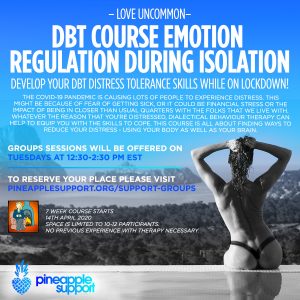If you haven’t read the last post, you might want to start there, since it has a much longer definition of what a social comedown is. In brief, social comedowns consist of difficult thoughts, sensations, feelings and urges arising after socialising that often include ruminating over past distress and judging yourself for having a hard time. They can include deep-seated feelings of shame, inadequacy, sadness, guilt, dread and embarrassment.
There are a huge range of ways to work with social comedowns; if they are having a big impact on your life, I’d recommend talking to a coach or therapist about how to find the best way for you. People are really individual, and because we each have our own histories and preferences no single option is going to work for everyone. Nevertheless, here are 5 ways that you could try to see if they fit for you:
- Focus on the sensations
Many people experience emotions in their bodies. If you are a person that can feel emotions in this way it can be a wonderful way of just being with one aspect of your emotional experience. Rather than doing things to avoid the sensations in your body, approach them with a sense of curiosity. Find a comfortable position to sit or lie in for 5 minutes, and just scan your body for sensations. When you find a sensation in your body that is related to your emotions be curious about it. Notice whether it is hot or cold, its density, whether it is staying still or moving. Notice its size and shape, and whether there is a colour or texture to it. Is there any tension to it? Just allow it to be exactly what it is in your body without trying to change it or move it. Notice what it is like to accept that you are experiencing this sensation. When your thoughts drift as they inevitably will, just bring yourself back and allow yourself to notice whether anything is different about the sensation.
This practice can help you to be with emotional experiences without ruminating or avoiding – which both usually make emotional experiences more intense and difficult to manage. It can help you to accept your emotions and allow you to move on from them. This is an exercise that you can practice in advance so that it is easier to remember when you are experiencing distress – and don’t be afraid to use it when you’re having nice sensations in your body as well as more difficult ones.
2) Mindfulness of thoughts
Creating space between you and your thoughts can be a hugely helpful alternative to ruminating. My favourite way of doing this is to imagine tiny boats going down a river, and then as I notice thoughts come up, I put them onto one of the boats and letting them go as they float off. Sometimes I can’t help jumping on the boat with the thought, and I have to ‘unhook’ myself by jumping off the boat back to the shore. That’s OK too. People often get caught by a thought and feel really compelled to follow it to its conclusion. Noticing that happen is a really important part of this technique, because it allows you to find the moment to decide not to follow the thought further, ideally without having further judgemental thoughts about yourself! Different people have different preferred ways to visualise their thoughts. While I prefer boats, others like leaves on a stream; trains on a track or balloons floating their thoughts away. Whatever your preference, noticing the thought is happening, and letting it come and go through your mind is a hugely powerful way to remind yourself that no matter how much a thought feels like your whole world, you can let it go.
Some examples of audio files to help you with mindfulness of thoughts are here:
3) Urge surfing
We all have urges to do and not to do things all the time. The urge may be to hide in bed all day or to lash out at someone or get really drunk. Sometimes it is helpful to notice what we really want to do, and just sit with that desire. You may notice the desire is located in a part of your body – and this process may be very similar to the first suggestion of sensation watching. Alternatively, urges may be a really different kind of experience for you than other sensations. Here are a couple of audio files to use for sitting with your urges:
4) Do intense exercise
People that know me will know that intense exercises isn’t something I’m usually keen on. Nevertheless, increasing your heart rate and keeping it above 120 beats per minute for 10-15 minutes helps a lot of people to manage distress. Some people think that it is because you get to complete the stress response cycle by using up some of the energy boost that you get when you’re facing a stressful or distressing situation. Some think it is an intense form of distraction that is helpful because it allows you to shift your attention to something else happening in your body. I think it is a mix of these things, and that it works really well for some people. If you want to try it, jumping, skipping or running can be a good way of getting your heart rate into that zone and holding it there.
5) Do a paired muscle relaxation exercise
This exercise can help because you’re both distracting from the distressing thoughts, feelings, sensations and urges that you’re feeling, and you’re doing something to physiologically relax your body and give it the message that you’re safe. We know that tensing and then relaxing muscles helps them to relax more fully than trying to relax them without tensing first. If you want to do this you can find exercises here:
If you’d like to do more work on how to cope with social come downs and other mental health challenges think about joining one of my DBT groups. We work on psychological skill building to help you to manage interpersonal relationships, distress and emotions. You can find more information here.


